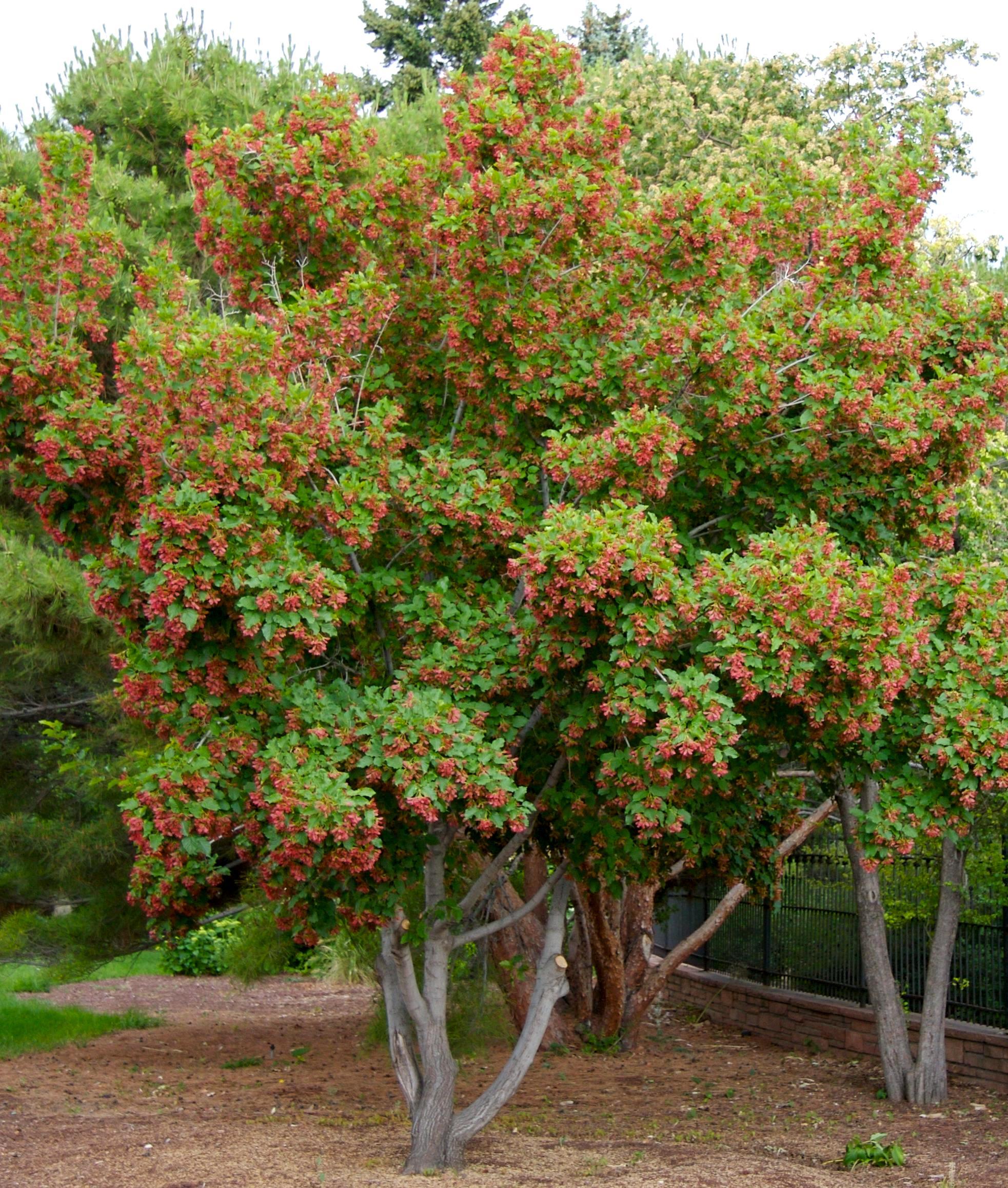Now is a great time to think about “planting it forward” in our landscapes. This part of the country seems locked into a 22-year drought that shows no signs of easing. With that in mind, I asked two of Tagawa’s Nursery Department pros, Josh and Phil, which trees they think we should be adding to our yards with water conservation in mind. It didn’t take long for them to come up with five nominations–trees that will definitely be part of the Tagawa nursery inventory this season.
“Hot Wings” Tartarian Maple
“Hot Wings” gets its named for being fun and festive in mid-summer, when its seed pods, AKA “samaras,” turn a brilliant red. The dark green leaves follow suit with a show of red to reddish-yellow in the fall.

This small maple is part of the Plant Select program managed by Colorado State University, Denver Botanic Gardens, and the green industry including garden centers like Tagawa. Plant Select promotes a selection of landscape plants that are especially suited to Colorado growing conditions. (See www.plantselect.org)
Hot Wings grow to up to 20 feet tall and wide. They prefer average to dry locations, and will not tolerate excessive moisture. They thrive in full sun but will tolerate partial shade, although the lower light conditions may result in fewer seed pods. Hot Wings are also very cold-tolerant Zone 3 plants.
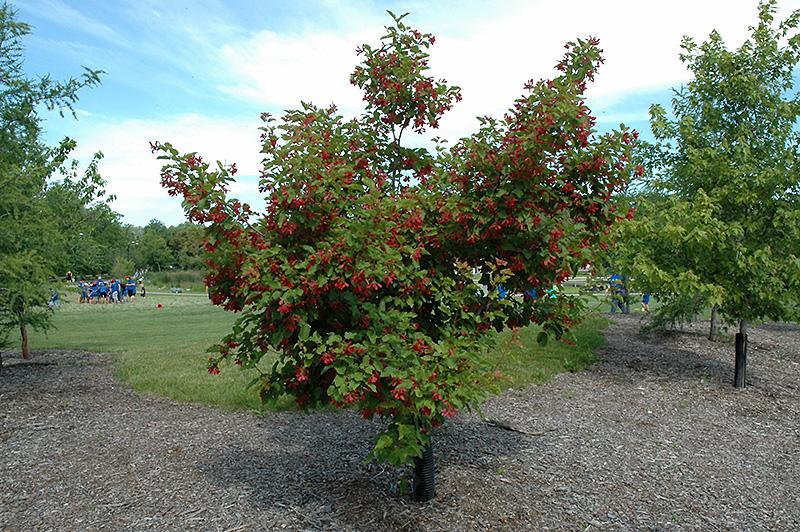
Hot Wings can often be purchased already pruned as a single or multi-stemmed trunk. They make an excellent accent tree, and can be especially useful in smaller landscapes. Note: Hot Wings can be prone to breakage under heavy snow loads. Our Garden Advisors at Dick’s Corner can explain basic pruning techniques that will help avoid this winter damage.
Thornless Cockspur Hawthorn
Whether categorized as a large shrub or a small tree, Thornless Cockspur Hawthorn is definitely a “keeper” in the minds of our Tagawa Nursery staff. Its attributes include a stunning blanket of white flowers in spring along with brilliant rusty orange fall color and berries that are highly attractive to birds. Its low, almost horizontal branching habit is both distinctive and attractive. Some basic pruning is required to maintain the tree’s best shape.
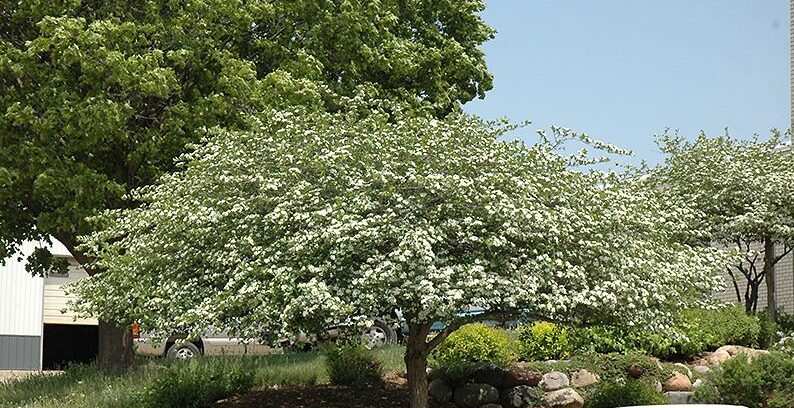
The abundant and “nearly perfect” blossoms of this hawthorn are especially attractive to pollinators, though the flowers’ fragrance can be much more appealing to bees and butterflies than to people.
Thornless Cockspur Hawthorns mature to about 18 feet tall and wide. They do best in full sun, but will tolerate partial, but not dense, shade. These trees require dry to average moisture and very well-drained soil. They will die if planted in a wet location.
Bristlecone Pine
Bristlecone Pines are right at home in the southwestern U.S., and bring a true Colorado flavor to any landscape. These small evergreens have a lot of personality, and with the “bottle brush” appearance of their needles, are often used as accent trees. They have a strong upright central trunk and sturdy spreading branches which help them stand out nicely against trees and shrubs with finer foliage.
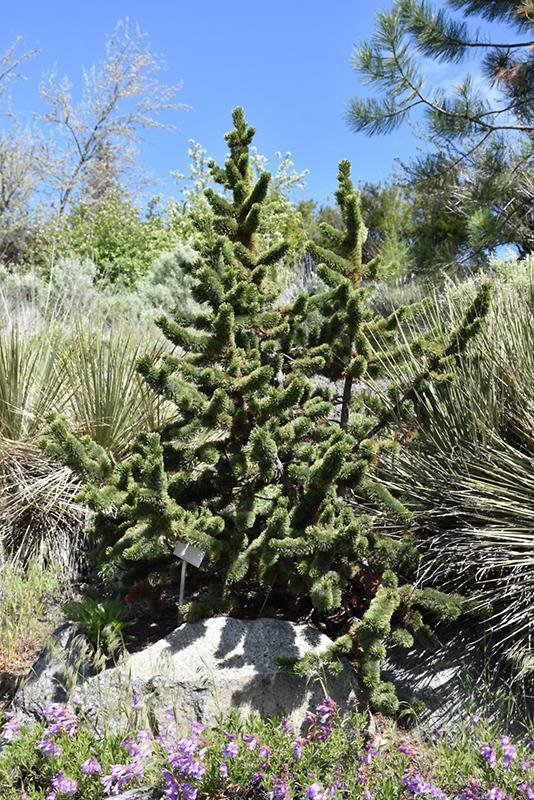
Bristlecone pines grow at a moderate rate up to 20 feet tall and 25 feet wide. They require full sun, dry to average soil and will not tolerate soggy sites. These low-maintenance trees are especially long-lived and can be grown as a “heritage tree,” with future generations in mind.
Northern Catalpa
If you want a large and relatively fast-growing tree, the Northern Catalpa may be just the ticket. This Catalpa has showy and fragrant clusters of white flowers held above huge, heart-shaped leaves in early summer. The orchid-like flowers can be showstoppers, especially for birds, bees, and other pollinators.
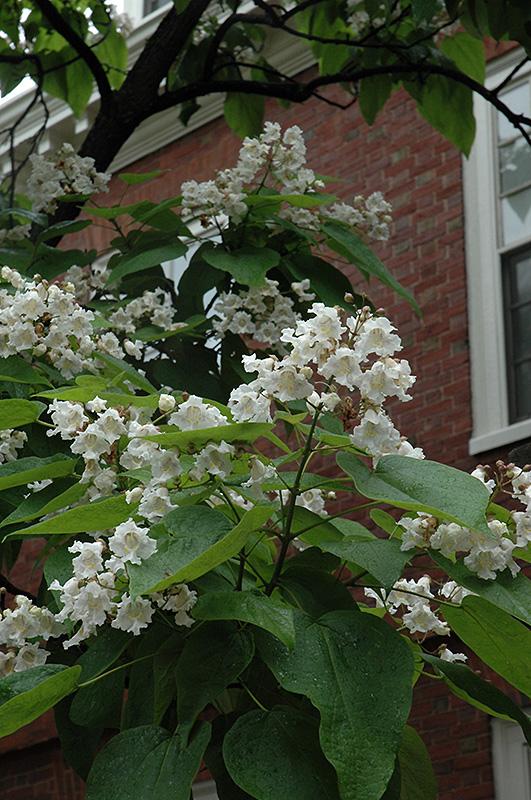
The flowers produce distinctive long brown seed pods in the fall which stay on the tree until the next year’s growth is established. The pods can make the tree a bit messy, but many fans of this North American native consider the clean-up requirements well worth it.
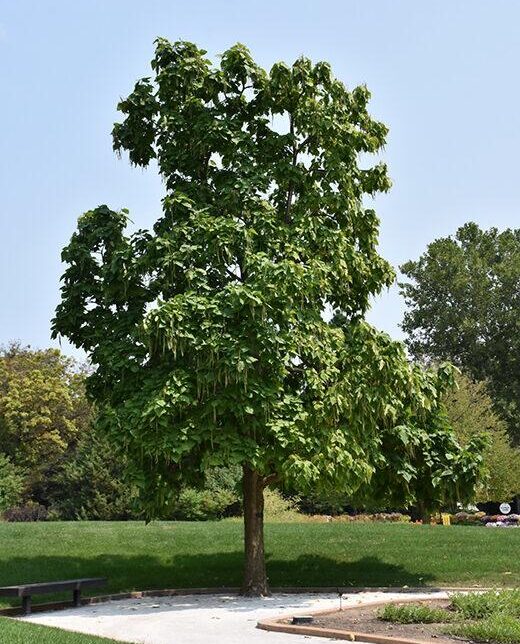
The Northern Catalpa matures to 50 feet high and 40 feet wide, and would not be appropriate for planting under powerlines. They’re especially adaptable, tolerating both dry and somewhat wet conditions with full sun or partial shade. To look its best, this tree will require some regular shaping and maintenance.
Bur Oak
These massive and majestic trees are considered to be the hardiest of all the oaks, and are a staff favorite at Tagawa. They will very slowly mature to 50 feet tall or more and nearly as wide, making them appropriate for large landscapes with no overhead powerlines near by.

Bur Oaks have a beautiful round silhouette with glossy green leaves that turn a coppery bronze in the fall. As they age–twenty-five to thirty years old an beyond–they begin to produce beautiful clusters of large acorns that are popular with wildlife.
Bur Oaks need full sun. They’re adaptable to both dry and moist locations.
Tagawa Gardens’ Nursery staff is ready to help!
Trees are often the heart of a beautiful landscape and almost become part of the family. As the planting season begins and our Nursery Department fills up, come see if we don’t have the perfect drought-tolerant tree that would be just right for your yard and the way you live in it. If you’d like more information or additional suggestions. stop by Tagawa Gardens today to talk to our tree experts.
